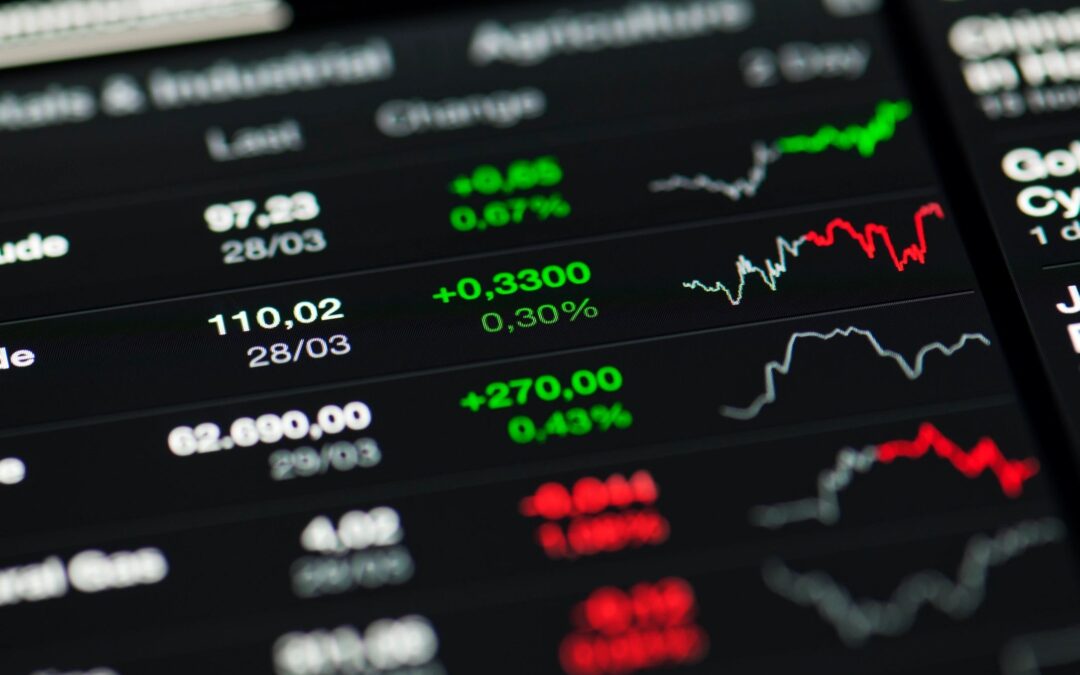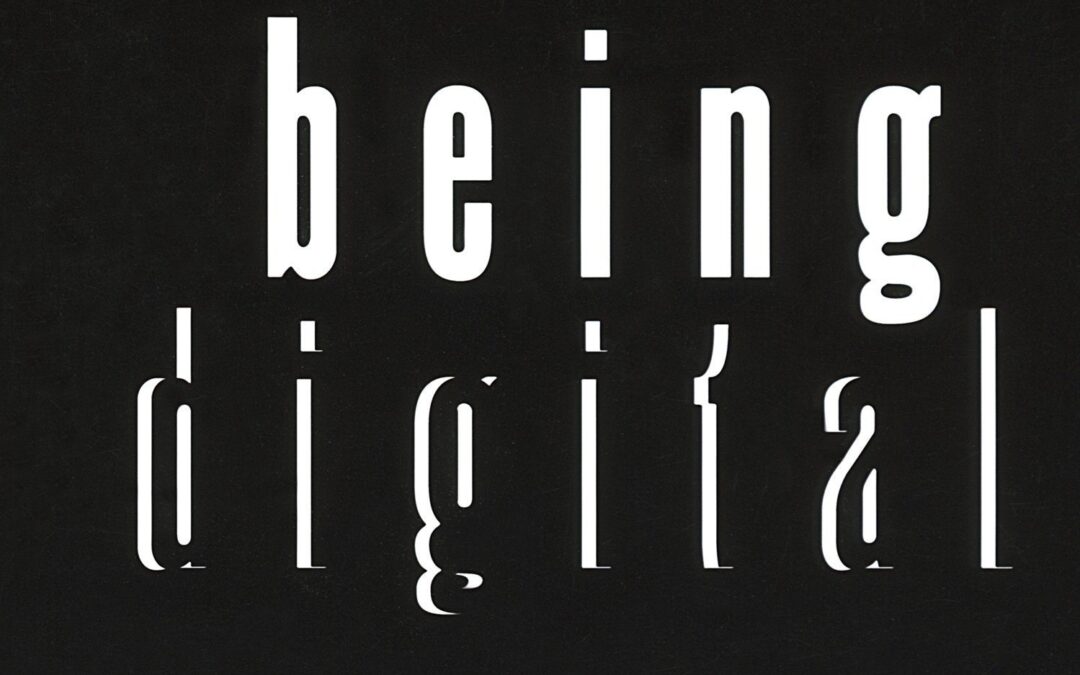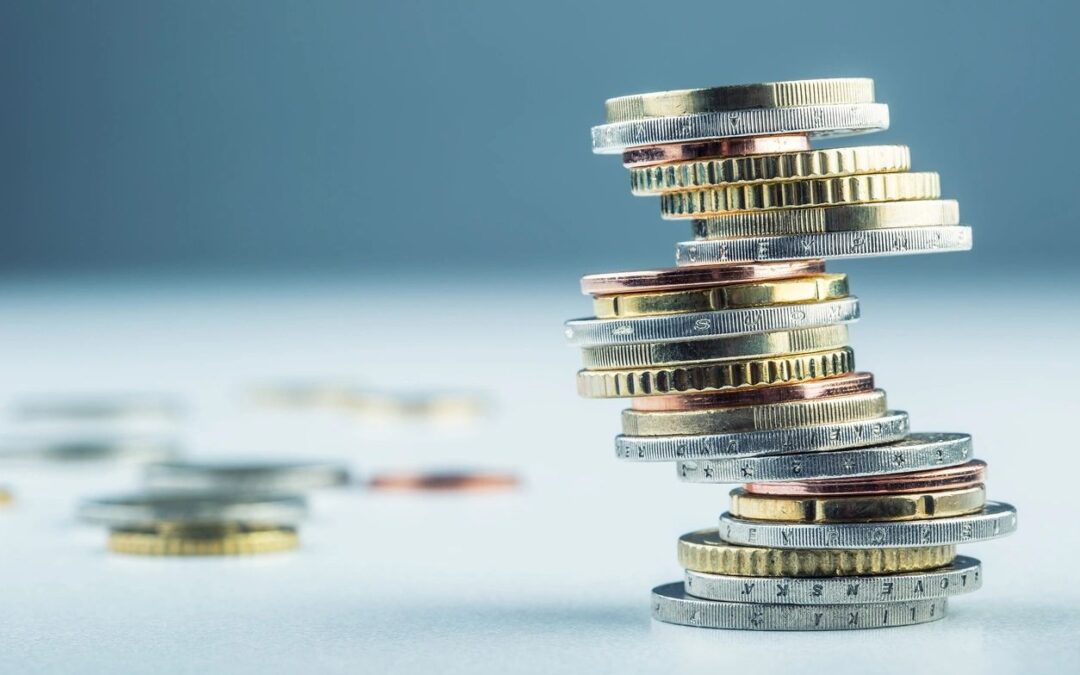
by Nicholas Mitsakos | Book Chapter, Economy, Investments, Writing and Podcasts
Separating signal versus noise is challenging these days because today’s signal is more muddled than ever. One of the more unusual circumstances, which I covered in more detail in the article “Important and Unknowable” is that the immediate past is telling us extraordinarily little about the near future. That is unusual because we can typically estimate the near-term by connecting the dots with reasonable depth and data from the recent past.
One of the reasons why people have inflation fears, currency tremors, market jitters, and emotional vacillation between joy and terror is that all these outcomes seem equally likely that any sense to realistically gauge the directions of these key metrics. We can usually rely upon near-term data to predict the near-term future, and that usually gives us a reasonable sense of comfort about the markets, and how to plan, prepare, predict, and withstand anticipated market moves. But that does not seem to be the case now.

by Nicholas Mitsakos | Book Chapter, China, Public Policy, Trade, Writing and Podcasts
The “Thucydides trap” is where a rising nation-state – for Thucydides it was Athens – must eventually have a violent confrontation with the existing dominant nation-state – Sparta in his time. It is a zero-sum game where there can be only one dominant nation-state as the eventual winner – and it is usually assumed to be the rising nation-state outdoing the dominant nation-state.
Today, many “experts” (and I have great disdain for self-proclaimed experts) believe this is the circumstance between the US and China. We are headed toward violent confrontation where there can be only one winner. I read the book by Thucydides about the conflict between Athens and Sparta (I cannot be dispassionate here about that outcome because my family is from Sparta on my father’s side). But I fundamentally disagree with Thucydides’s historical descriptions being used as analysis by anyone to describe global events, especially those between the US and China.

by Nicholas Mitsakos | Book Chapter, Economy, Finance, Investment Principles, Investments, Writing and Podcasts
Economic predictions have always been highly variable and uncertain, and, for some reason, relied upon as if the future were a magical algorithm. Essentially, economists would make one fundamental mistake. They thought they were practicing a science. Data could be collected, inputted, and a predictive algorithm could be generated. Even Nobel Prize winners like Paul Samuelson believed that with enough data we could come to understand the economy and how it functioned.
This is nonsense. As Daniel Kahneman and Amos Tversky have shown us, human behavior and irrationality, combined with unpredictability and randomness (thank you Naseem Taleb) make this even a questionable social science. Using existing analysis and algorithms to reliably forecast is a fool’s errand, essential for someone’s tenure, and maybe even a Nobel Prize, but doesn’t add much that is useful. Some of the more laughable Nobel Prizes have been given to people who determined that markets were efficient. They are not. Economies can be predicted with useful data input. They cannot. A couple of inputs about inflation and the unemployment rate, and we know how to manage an economy. We can’t. That last one is the Philip’s Curve – true for a limited time and then it goes spectacularly wrong – a lot like most risk and market prediction models.
One thing we can add is that most predictions seem too good to be true, and almost always are. The economy is not a perpetual motion machine, nor is it a credit card with no limit and no requirement to pay the balance. The current notion that “deficits don’t matter” seems patently silly and naïve to think that we can simply print money without any economic discipline to generate sustainable profitable businesses with the efficient use of capital.
“Money goes where it’s needed, but it stays where it is treated well.”
Walter Wriston (former CEO of Citicorp)
That means it has to generate a return and not be co-opted by governments and public policy, nor be flooded by capital with no economic discipline.
Deficits may be a reasonable way to jumpstart a sluggish economy, but they are not sustainable. Current thinking is that fiscal discipline, debt repayment, and the idea of a balanced budget are anachronistic and useless. It is dangerous to stress test this idea because the downside is potentially cataclysmic. Capital likes a free market, but we hardly have a free market with money today. Constant stimulus does not create economic discipline.

by Nicholas Mitsakos | Book Chapter, Digital Assets, Green Energy, Public Policy, Writing and Podcasts
Digital currencies, crypto assets, digitized securities, and distributed ledgers require an enormous amount of power. While the combination of these assets is subject to tremendous hype, the environmental impact has been mostly ignored. However, this is changing because there has been increasing alarm about crypto’s carbon footprint and environmental impact. While there are attempts to use alternative energy, such as solar farms, thermal heat, and wind farms, sustainability for processing digital assets is still evolving. One thing is clear, as advancements are made in clean and renewable energy, digital asset mining will reduce its requirement for carbon-based energy. This is an essential trend if digital asset processing is to be sustained as an important component of global finance. The trend toward digital assets disrupting global finance is irreversible, thus green energy solutions are essential, and a condition precedent in order to participate and profit from this economic opportunity. It is crucial for crypto mining to address the environmental concerns attached to digital asset processing and creation. There is an irreversible shift to decarbonization and lower carbon footprints. The digital asset market is not going to go away, but since energy is such a critical component, energy efficiency and green energy are the essential components to any long-term perspective of a digital asset strategy. The low-cost provider wins. With digital assets, that means the combining lowest carbon footprint with scale and the ability to connect to the electrical grid.

by Nicholas Mitsakos | Book Chapter, Currency, Digital Assets, Investment Principles, Writing and Podcasts
“Distributed ledger technology and digital assets have the potential to dramatically disrupt global equity and debt markets.” (World Economic Forum, May 2021)
Distributed ledger technology (DLT), otherwise known as Blockchain technology, will radically simplify financial markets and, more importantly, fundamentally change the market’s infrastructure. Specifically, distributed ledger technology decentralizes critical data and enables an entirely new financial system where capital flows without the need for traditional intermediaries.
While there are challenges and numerous detractors, DLT is an irreversible disruptive force transforming capital markets and the global financial system.
Regulators (a potential obstacle) are increasingly comfortable with this technology. Distributed ledgers, decentralized finance, and Blockchain-based platforms are creating products and services evolving from exploration and experimentation to commercialization. DLT will be transformative to the world’s largest industry and represents an unprecedented opportunity. New digital platforms created by decentralized finance companies integrate securities and other digital assets comprehensively. The platforms enable market participants and intermediaries to issue, trade, settle, and provide custody services for digital assets, usually consisting of digitally native equity tokens (ICO’s).
These digital asset and financing platforms exist in parallel to existing market infrastructure and securities markets, in many cases offering an alternative digitized version of a standard asset class. Fundamentally, what is disruptive is that this new technology disintermediates all parties, creating effectiveness and efficiency in the transfer and recording of transactions that is unprecedented in legacy infrastructure

by Nicholas Mitsakos | Book Chapter, Currency, Digital Assets, Technology, Writing and Podcasts
Gold is built on a collective belief in its value. There is nothing fundamentally “inherent” in the price attributed to gold other than an agreed-upon value. The same is true with Bitcoin and other crypto. In fact, it’s fair to say that all asset prices are fundamentally based on the collective belief about value regardless of some perceived upon “inherent” value.
The pervasiveness of crypto as it exits a somewhat self-contained digital world and has institutional investor attention forming a basis for far-reaching financial transactions establishes it more as an economic force much more than a financial sideshow.
Game Theory contends that people act collectively if they believe others are doing the same. Essentially, the theory holds that many situations provide a clue, called a “focal point” around which people coordinate their actions, even if there is no explicit agreement to do so. As John Maynard Keynes has said, picking investments is much like guessing the winner of a beauty contest. It is not a matter of what you think, but it is predicting who most people think the winner should be. This is how markets move and it is based on a fundamental tenet of game theory.

by Nicholas Mitsakos | Book Chapter, Currency, Digital Assets, Writing and Podcasts
“Being Digital,” the groundbreaking book by Nicholas Negroponte described what happens to a global economy when all assets can be digitized. Presciently predicting the impact on music, film, retailing, and commerce in general, Negroponte intuitively understood the disruption and the creative/destruction that would be unleashed when a globalized infrastructure could deliver all products and services, including assets and intellectual property, instantly via a worldwide digital infrastructure and network.
The same “digital” effect is impacting global finance today. Now, all financial assets are “being digitized” and can be delivered instantly on a global infrastructure, fundamentally upsetting the world’s largest industry with unprecedented creativity and destruction.
Crypto assets are the manifestation of that digital form. While there is debate about whether or not an asset can truly be “digital,” the market has spoken. While there will be continued volatility, speculation, creation, and destruction, a digital platform for financial transactions ranging from the simple transfer of funds to complex financial transactions, investment, and lending are here, disrupting a multiple trillion-dollar industry.

by Nicholas Mitsakos | Book Chapter, Currency, Digital Assets, Investments, Writing and Podcasts
Bitcoin is an innovative, rapidly expanding network for storing and exchanging value among investors.If it’s an asset, does it have an inherent value, like gold? Arguments about “inherent value” are, and always will be, meaningless. Is there really some kind of “inherent value” in gold? We just decided it was valuable to us. The same is happening with Bitcoin.
It’s a cryptoasset that has the safe haven characteristics of gold and will potentially compete with it for a place in portfolios. Bitcoin is not a currency and will not be adopted as a new medium of exchange. It is not a stable store of value, nor can it be easily transmitted and exchanged for any good or service at a consistently predictable value. But, that’s not important from an investor’s perspective. Bitcoin remains incredibly volatile, and its correlation with other major assets has been inconsistent, but allocations are seen as suitable among an increasing number of investment professionals, and, increasingly, it is seen as an alternative investment equivalent to a derivative or other call options, given the potential for spectacular returns. The downside is well-defined while the upside can be asymmetric and significant.

by Nicholas Mitsakos | Book Chapter, Digital Assets, Investments, Writing and Podcasts
Cryptocurrencies Hit New Highs. Should we be terrified?
Probably.
Bitcoin, Ether and, the most recent joke, frenzy, and punch line, Dogecoin, have increased 10x to 20x over the last 12 months. A spectacular return, but can it last?
Probably not.
The forces driving the eye-watering returns are the same as those that drove the insanity behind GameStop: the equivalent of a trading floor in every pocket funded with excess cash looking for disruptive investment opportunities and charging forward like an out of control herd – or lemmings – however you want to envision it. Cryptocurrency became the overwhelming target of Reddit day traders and mobs. Social media influencers, led by various forms of PT Barnum imitators like Elon Musk and many less sophisticated contributors, combined with the public listing of Coinbase to create a massive rally
Despite making inroads, Bitcoin and other digital currencies are still only a tool for speculators. There is no prospect of stable value enabling the fair exchange of assets for goods and services. It is a store of value, but much like any speculative asset, it can be a store value that fluctuates wildly.
That is not to say that some speculative assets, whether they be works of art, sports cars, or digital currencies can’t ultimately have long-term value and generate excellent investment returns. But digital coins are only one part of the digital asset platform, and will most likely prove to be a sideshow. The real opportunity for value creation, sustainability, and appreciation is the right business model and digital platform for the creation of digital assets that are easily and securely exchanged

by Nicholas Mitsakos | Book Chapter, Finance, Writing and Podcasts
Initiative, savvy, luck, circumstance, and convolution have taken over currencies – or at least digital creations purported to be currencies (but in reality don’t, and never will, quite fit the bill). Those entities that create and support real currencies are taking notice. In other words, welcome to government in action. Here come central bank digital coins
Luck rather than leadership, circumstance rather than foresight or political skill, seem to have been more helpful in triggering these developments. Digital coins (while loosely described as “currency” are more like a digital asset easily transferred and accounted for in a digital ledger) represent a handful of rather clever people taking on central government’s mighty bureaucrats. Armed with simplicity, clarity, and algorithms, they are defeating all administrations’ fondness for complexity, confusion, and rules.
In general, bureaucrats are masters of the art of convolution. Essentially, governments work overtime to create farce in the spirit of precision. An example of bureaucratic absurdity can be found in France (admittedly, a country that has taken bureaucracy to an art form – perhaps more so than art itself). When the government started a new lockdown because of the pandemic, they devised a two-page permission form to leave home, with 15 different justifications, before, thankfully, shelving it in the face of ridicule. The French can buy alcohol, for instance, but not underwear. These rules were simply to be able to walk out the front door, and the government imagined that this kind of detailed process was somehow useful, and not the bewildering reality it represented.
Now imagine these “developed” governments (of whom France is probably not the worst offender) trying to deal with a global currency, currency exchanges, and the transfer of funds internationally. We don’t have to look too far to find the convoluted rules behind Bretton Woods, the WTO, and other international absurdities to recognize that this problem is not easily solved, or even understood. Bureaucrats are generally better at devising rules, charging fees, and collecting taxes and information than making anything that is useful or even comprehensible.

by Nicholas Mitsakos | Book Chapter, Investment Principles, Public Policy, Writing and Podcasts
Inequality is not an appropriate measure of economic performance or wealth creation.
Inequality is a relative and comparative statistic. It shows how wealth is distributed, which is not that meaningful, and certainly should not be the basis of economic policy. Essentially, inequality is a comparative metric and not an absolute one. That is, if everyone does better but a few people do much better, inequality increases, and this is seen as something bad even though everyone is better off. It is used to create misleading policies that focus on redistributing wealth that is created versus policy that should be focused on enabling greater and more distributed wealth creation – not wealth capture. Policy should focus on how to best create wealth for more people. The absolute degree of wealth creation is beside the point relative to other people. Creating opportunity for the most people is what matters.
As an example, overall wealth has increased over the last 30 years for every population group, but for the highest group, it has increased more substantially. But, why is that a problem? Instead, it is a natural and unavoidable outcome of the free market.
Here’s the analogy: if you want to hold a lottery, the prize has to be disproportionately large to have the most participants to raise the most capital. The simple goal is that net outflows (prizes) are smaller than the net inflows (contributions or purchased tickets). This is very similar to business opportunities and wealth creation.
As an economy, we want as many contributors to wealth creation – entrepreneurs and new businesses driving economic growth – as possible. The only way to do this is to enable market participants to have the greatest possible reward without restrictions. Most businesses will fail (much like most lottery tickets lose). But, because we have increased the number of willing participants, we also increase the opportunity to create the most wealth – the most businesses, jobs, and economic growth, as well as increasing the tax base from both businesses and individuals. So wealth creation, even if it is concentrated mostly in a handful of people, benefits the overall economy and society much more effectively than any attempt to limit that upside or redistribute it through politically popular but inefficient and demotivating policy.

by Nicholas Mitsakos | Book Chapter, Economy, Public Policy, Writing and Podcasts
The world economy is struggling to escape the Covid-19 economic shock. During the worst of this pandemic, the world’s developed economies provided an enormous fiscal stimulus on a scale not seen since the second world war.
Now, however, the US is proposing to more than double its already generous fiscal stimulus. Is this a good idea or excessively risky?
Go Big, But Where?
For its proponents, the idea of “going big” is designed to be a transformative political moment. But too much appears allocated inefficiently, and it may simply be irresponsible.
An easy money era produced only anemic growth. But the scale and direction of additional stimulus look more like irresponsible fiscal policy leading to significant overheating and the waste of resources. While there is a strong case for a more aggressive approach to fiscal policy, that policy still needs to be grounded in economic realities and reasonable priorities. These are not.












